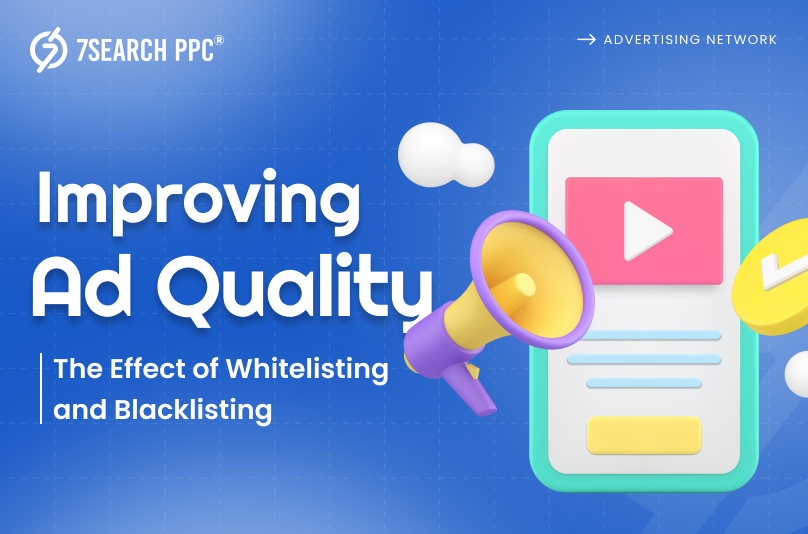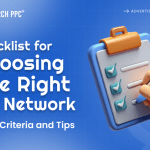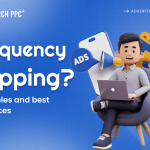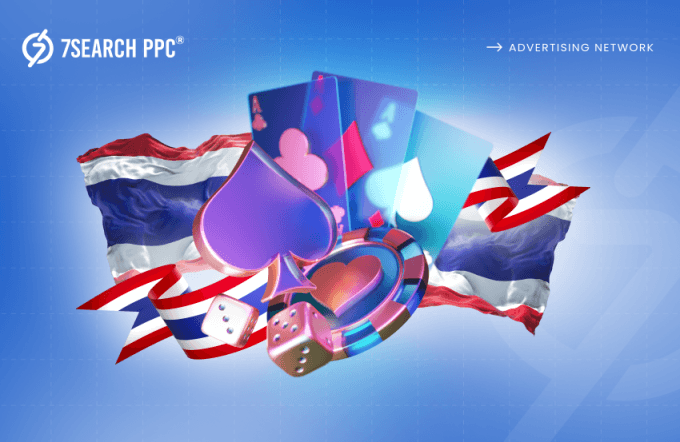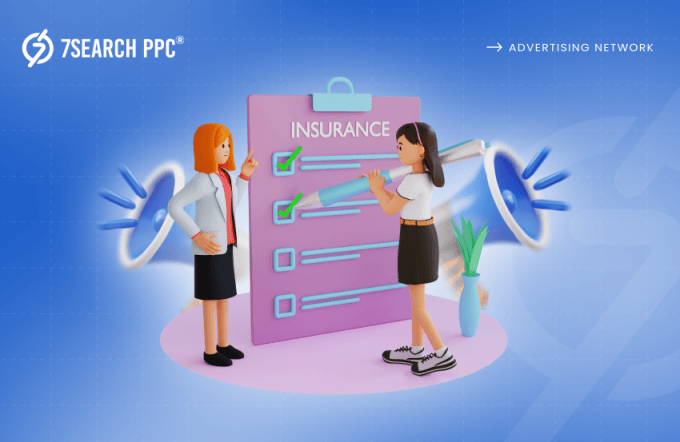We generally avoid going to a market where we know the quality is low, so we move to the market where we find the things we want. How do we know the real quality? Either we’ve tried it once, or someone has recommended it. This is how whitelisting and blacklisting work in digital advertising.
These two techniques allow advertisers to control where their ads are displayed. Whitelisting involves creating a list of approved websites or apps where the online ads can be shown. Blacklisting involves creating a list of websites and apps where the online ads should not be shown. By using these technologies, advertisers can ensure that their online ads are only displayed on high-quality platforms where they get the most exposure.
This blog will help you improve the caliber and effectiveness of your ad campaigns by discussing the benefits of using whitelisting and blacklisting. We will also provide tips on how to use these techniques effectively.
Excited? Let’s begin:
Whitelisting and Blacklisting: The Yin and Yang of Digital Advertising
High-quality traffic matters in many ways for advertisers, like increasing conversions and maximizing ROI. But can they easily obtain it? Absolutely not, because they can’t depend on a single platform to catch traffic on their website or app.
If they get low-quality traffic from a particular advertising platform, they can’t afford to repeat this mistake because it can turn into wasted ad spending. That’s why whitelisting and blacklisting are necessary for filtering the right traffic sources. Come, let’s understand more about it.
Blacklisting involves creating a list of websites or placements where you don’t want your ads to show. This is usually because those sites are not generating enough clicks or sales for you, or in other words, we can say that they have low-quality traffic. By blacklisting these sites, you can avoid wasting your advertising budget on ineffective ad placements.
On the other hand, whitelisting refers to selecting specific websites or placements from which you want to receive traffic. This approach focuses your online advertising efforts on high-performing sources, which ensures your online ads are seen in places that offer better results.
By utilizing whitelisting and blacklisting, advertisers can optimize their ad budgets and increase their chances of success.
The Benefits of Whitelisting and Blacklisting
If advertisers are using this filtration tactic that helps them focus only on high-quality traffic sources, then it means there are some benefits. Yes, both options offer distinct advantages, which are as follows:
Benefits of Whitelisting
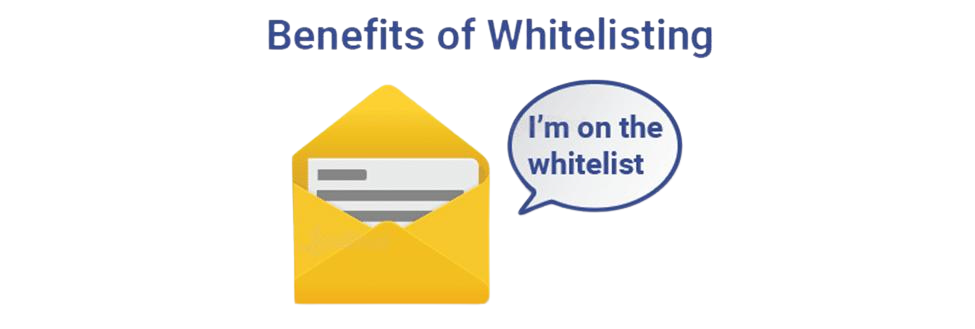
Target High-Quality Traffic
Whitelisting allows advertisers to select specific websites or apps where their ads will be displayed. This helps them focus only on high-quality traffic sources where they promote their offerings in front of a genuine audience.
As a result, advertisers get better engagement and higher conversion rates since their online ads get real attention because they are shown in front of those who are more likely to be interested in their offerings.
Better Control Over Ad Placement
With whitelisting, advertisers have full control over where their ads appear. This means they can avoid placements on irrelevant or low-performing websites, ensuring that their ads are only shown on reputable and trusted platforms. This reduces the chances of ad fraud and enhances brand safety, leading to more effective ad campaigns.
Improved Campaign Performance:
Advertisers can focus on pre-approved and high-performing websites or platforms to achieve better results with their ad campaigns. Whitelisting ensures that ads are placed in environments that have already proven successful. This leads to more accurate targeting, better audience engagement, and, ultimately, a good return on ad spend (ROAS).
Benefits of Blacklisting
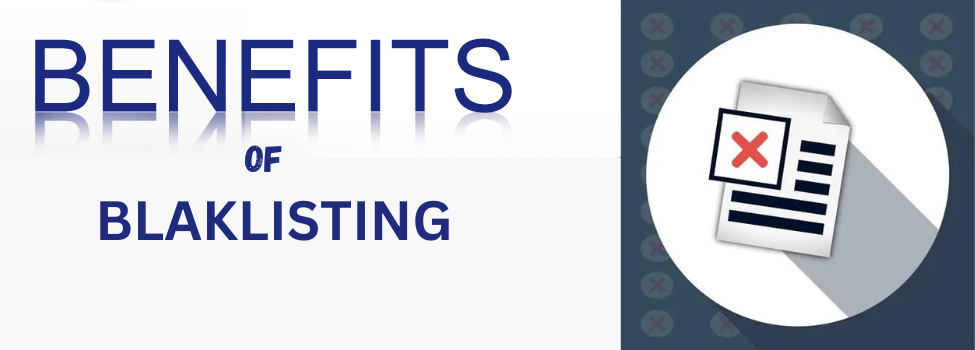
Brand Safety
Brand safety is very important in digital advertising. Blacklisting allows advertisers to protect their brand image by avoiding placement on sites that might display inappropriate or harmful content. This not only shields the brand from potential backlash but also ensures that it does not invest a single penny in traffic that is totally useless for reaching its target audience.
Cost Efficiency
By blacklisting ineffective websites, advertisers can save money that would otherwise be spent on low-performing placements. When ads are shown only on high-quality sites that resonate with the target audience, the overall advertising spend becomes more efficient.
Cost efficiency means more budget can be allocated to successful campaigns, maximizing the impact of ad budget. Ultimately, this leads to better results and a more profitable advertising strategy.
Helpful for Future Ad Campaigns
Using blacklisting can protect you from making a bad decision on future ad campaign strategies. By analyzing the sites and content that perform poorly, you can make better decisions in upcoming campaigns.
This strategy helps you understand which placements to avoid, which allows you to focus your efforts on more effective channels that drive better results.
Additionally, learning from past mistakes can guide your choices when selecting new advertising partners for your ads. This ongoing process of evaluation and adjustment not only enhances your current campaigns but also sets the stage for successful future advertising efforts.
When Is It Necessary to Blacklist a Traffic Source
There is not a single key metric to understand the quality of traffic and genuineness of a particular platform from which you are buying website traffic or app traffic. There are other metrics are also there that you need to check, and after that, you can decide whether it is necessary to blacklist a traffic source or not:
Dealing with a Bot Traffic
If a traffic source generates clicks or visits through bots or fraudulent tactics, it should be blacklisted. This type of traffic doesn’t bring real users or customers, leading to a wasted advertising budget.
Let’s take a scenario: If there’s a sudden rise in traffic on your business website without any increase in sales or sign-ups, it may be due to fraudulent activity. Blacklisting such traffic sources saves you from losing money on fake visitors.
Low Conversion Rates
Compare your conversion rates with your previous results. If a traffic source sends a lot of visitors, but very few of them convert into customers or leads, it may be time to blacklist it before it sucks all your budget.
Even if the traffic volume is high, low conversions mean that visitors are not engaging or buying ( as we discussed in the previous point). This makes the traffic source inefficient, as it keeps taking money without providing good results.
Bad Reviews
Traffic sources that have consistently negative feedback or bad reviews from other advertisers can be risky. Bad reviews may indicate poor traffic quality or issues with transparency and trustworthiness. If multiple advertisers report negative experiences, it’s safer to blacklist the source to protect your ad campaigns from similar issues.
Sometimes, competitors may use fake review tactics to target their competition. Instead of taking immediate action, it’s important to first evaluate the quality of traffic on your own before blocking it.
Data Violation
Traffic sources that do not follow legal or industry standards can hurt your business, and you should block such sources. Suppose you choose a particular ad platform to buy traffic, and that source violates data privacy laws like GDPR or promotes your online ads alongside harmful content; it’s best for you to blacklist it without any delay.
Non-compliant traffic can put your business at risk of legal troubles and harm your brand’s reputation. Brands only buy traffic in the hope of increasing their business, not to cause legal issues. Overall, it’s crucial to block these sources before their violations negatively impact your business.
Low-Quality Leads
There are two types of business leads: high-quality and low-quality. You need to filter which traffic sources deliver low-quality leads. Please keep in mind that low-quality leads are different from bots because they can be real users but may not convert or engage effectively with your business.
A traffic source that delivers leads that rarely convert into sales is not valuable. If you get leads with incomplete or wrong contact information or from people who are not serious buyers, that source should be blacklisted. Such poor-quality leads waste your team’s time and efforts without adding value to your business.
Negative Return on Investment
Negative ROI is a red signal for advertisers that tells “the time has come to stop the investment.” If you spend more on acquiring traffic from a source that you earn from it, the return on investment (ROI) is negative. This makes the source unprofitable and not worth keeping. Regularly analyzing your ROI will help you identify such traffic sources and block them to avoid unnecessary expenses.
However, whitelisting and blacklisting both are important from advertisers’ perspectives. However, if you focus on filtering the traffic sources according to these points, you will automatically find the traffic sources that deserve a place in your whitelists.
How Do You Blacklist and Whitelist Traffic Sources?
Envision yourself as a marketer trying to attract quality traffic to your campaign. The first tool you have at your disposal is targeting options, such as demographics, interests, and location. Can we filter traffic using targeting options? Yes, we can.
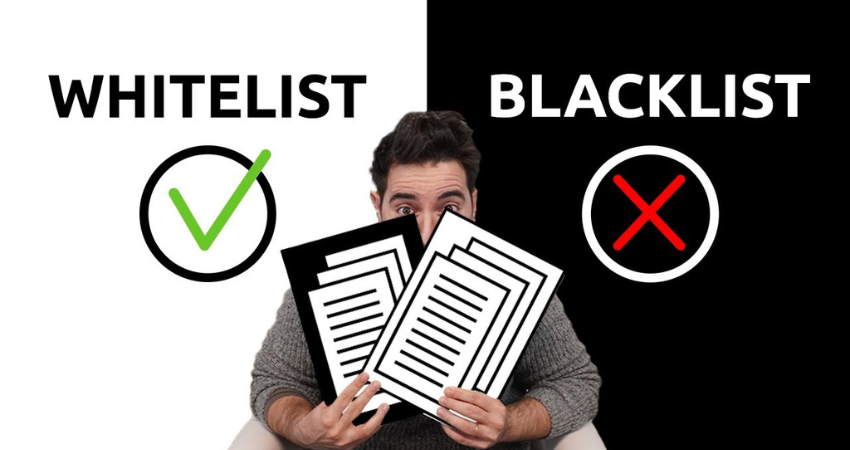
However, this is just the first option, and targeting exact locations does not always guarantee desired results compared to whitelisting and blacklisting, which serve as the second option. Come, let’s find out how it works:
Domains
Blacklisting domains means preventing traffic from certain websites. For instance, if you block nutrition.com, no visitors from that site will reach you, including all its subdomains like blog.nutrition.com. This is helpful in excluding unwanted traffic from sites that don’t fit your target audience or ad campaign goals.
You can use the same process to whitelist any domain, but the motive is different. If you do that, it means you are satisfied with the quality of traffic and are allowing it to your website. By managing domains effectively, you can maintain a more relevant and quality flow of visitors to your business website or app.
URLs
Whitelisting and blacklisting traffic sources require careful attention to the quality of the traffic and the origin of that traffic. Blacklist and whitelist traffic through URLs allows you to target specific web addresses. For example, if you want to block traffic from http://www.nutrition.com/index.html, you can do this by adding it to your blacklist, which ensures that visitors from this URL do not access your site.
You can even filter based on specific words in the URL. This helps you focus on attracting visitors from high-performing pages and avoid those that you don’t need.
Publisher ID
Who are the publishers? They are the ones who publish ads on their page, and their audience clicks on these ads, which helps the publishers earn money when people click on them. They use fraudulent strategies to increase clicks on online ads. You need to identify and block them. Every publisher has a unique ID that helps identify them in ad networks.
You can choose those IDs to allow or block traffic from certain publishers based on their performance. For example, if one publisher consistently brings low-quality traffic, you can blacklist them to improve the performance of your ad campaigns.
This way, you can focus on collaborating with publishers who deliver better and real engagement and conversions.
Keywords
What do you understand when you look at the term ‘keywords’? It refers to a word that suits your offerings or brand motive. They can be used in whitelisting and blacklisting traffic sources. Using keywords helps you refine traffic based on specific words or phrases.
If you’re selling high-end products, you might want to block traffic that includes keywords related to sales or discounts. This ensures that the visitors you attract are genuinely interested in your premium offerings. By managing keywords, you can maintain the integrity of your brand and reach the right audience.
IP Addresses
An IP address identifies a unique device or network on the internet. You can blacklist certain IPs to prevent traffic from a particular traffic source. If you notice repeated fraudulent activity from a specific IP, blocking it can help protect your ad campaign and vice versa.
For example, if you think that traffic coming to your site is genuine and high-quality, then you can put that IP on your whitelist. By doing this, you can make your whitelisting and blacklisting efforts successful.
Conclusion
Whitelisting and blacklisting traffic sources are essential tactics for advertisers to maintain control over where their ads appear and ensure they’re reaching the right audience. These strategies help filter out low-quality traffic sources, protect brand safety, and improve campaign performance.
In this blog, we learned that by focusing on high-performing traffic sources and eliminating poor-quality or fraudulent sources, advertisers can maximize the efficiency of their ad spend and drive better results. Overall, whitelisting and blacklisting take time, but it offers you the most out of your advertising efforts in today’s digital world.
Frequently Asked Questions (FAQs)
What are whitelisting and blacklisting in digital advertising?
Ans. Whitelisting and blacklisting are techniques used by advertisers to control where their ads appear. Whitelisting allows ads to be shown on approved sites, while blacklisting prevents ads from appearing on low-quality or irrelevant websites.
How do whitelisting and blacklisting help improve ad quality?
Ans. Whitelisting ensures that ads are displayed only on trusted, high-quality sites while blacklisting blocks ads from being shown on sites that have low low-quality traffic or are harmful to the brand.
Can whitelisting and blacklisting save advertising budget?
Ans. Yes, whitelisting and blacklisting can help save money by focusing the ad budget on high-performing websites through whitelisting and avoiding wasted spending on low-quality sites through blacklisting.
Is whitelisting and blacklisting only useful for large ad campaigns?
Ans. No, whitelisting and blacklisting can benefit advertisers of all sizes by ensuring ads are shown on relevant, high-quality websites, no matter the size of the ad campaign.
Can whitelisting and blacklisting help prevent bot traffic?
Ans. Yes, whitelisting and blacklisting help prevent bot traffic. Blacklisting can block websites that generate bot traffic, while whitelisting helps ensure ads are shown on sites with real human traffic.

